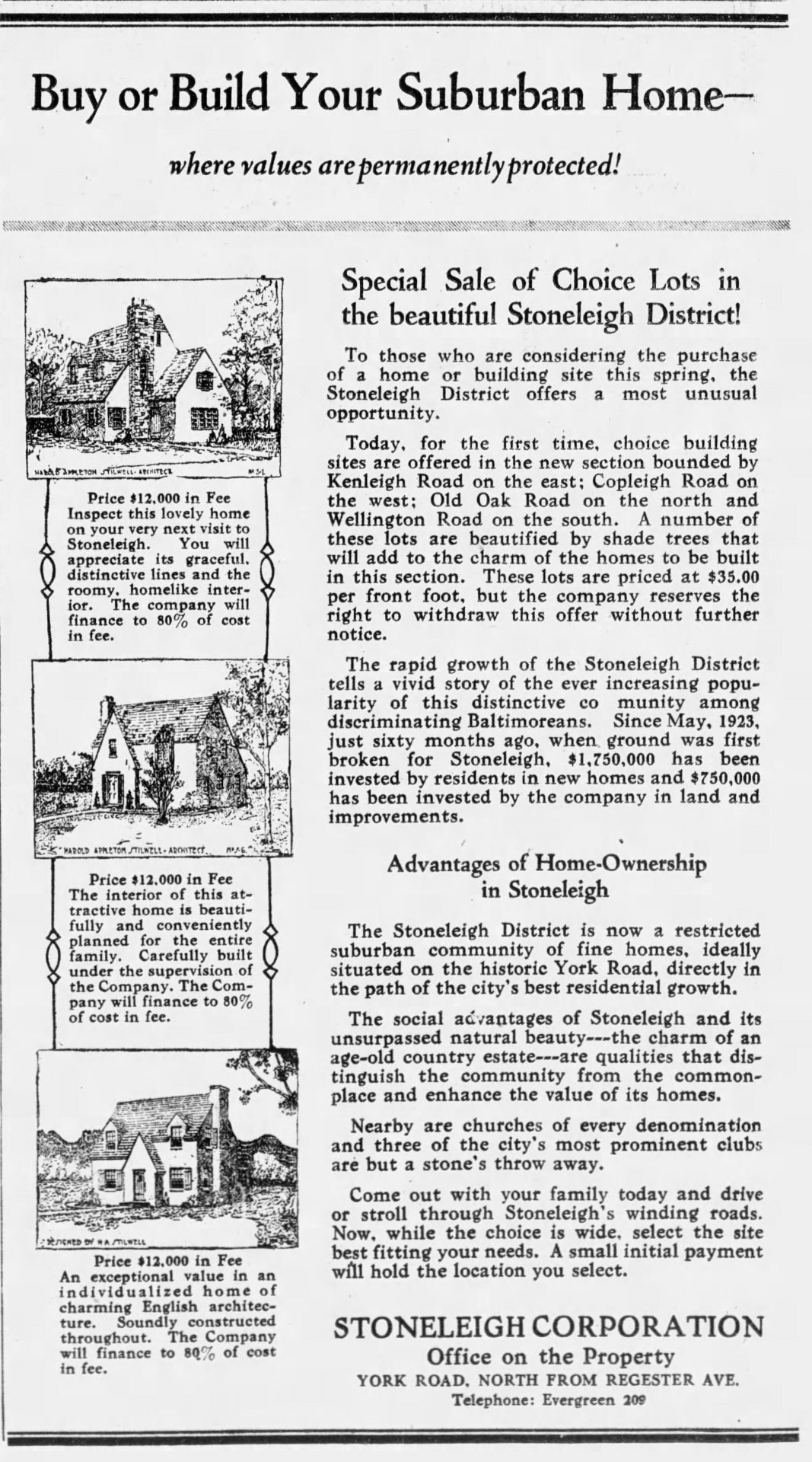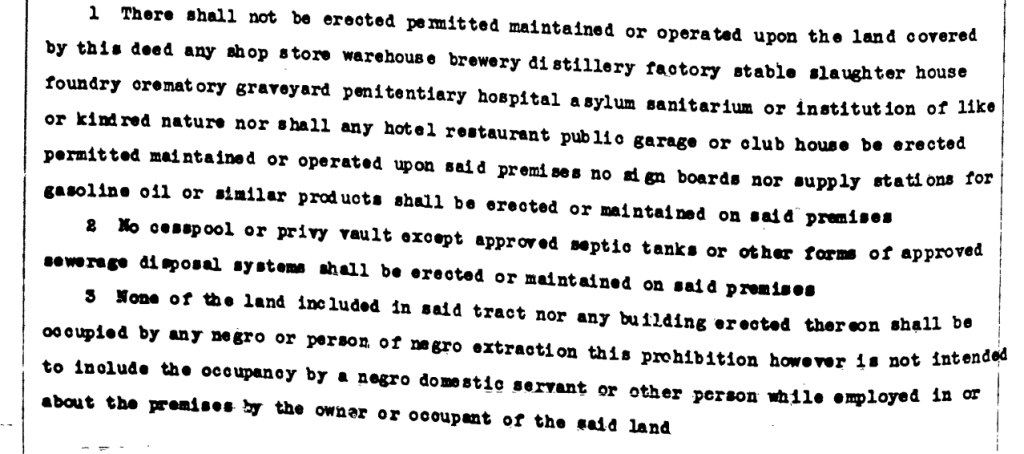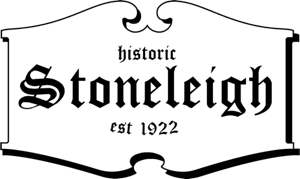Stoneleigh Community Project to Strike Restrictive Racial Covenants
“Buy and Build this Fall in Stoneleigh” read an advertisement from the newly created Stoneleigh Corporation in the Sept. 9, 1924, printing of The Baltimore Sun Evening Edition. Highlighting the advantages of building during the autumn season, with low materials and labor costs and ample time to select fixtures and decorations, the Stoneleigh Corporation noted the area “has gained a place among Baltimore’s foremost suburban residential communities chiefly because of its unsurpassed location and its expert landscape treatment.”
Nearly 100 years later, those published words still ring true. Tree-lined streets host artistically architectured residences with manicured lawns hugged by winding sidewalks. These attributes allow children to safely walk to their local elementary school, and foster a deep sense of community among the neighbors. The visionaries at the Stoneleigh Corporation recognized this appealing opportunity for potential buyers, and vowed that “our representatives will gladly show you over the property without the slightest obligation on your part.”
However, beneath the words printed in The Baltimore Sun Evening Edition, were disturbing realities of early 20th century housing policies. The Stoneleigh Corporation had only a particular buyer in mind when those words were printed. Those restrictions reveal deeply embedded prejudices that cemented deliberate exclusion and housing segregation in this community.
The original 1922 deed between the Stoneleigh Corporation and the grantor Annie S. Von Kapff, et.al., laid out the plot of land (110 acres), and a number of covenants that would guide the development of the community. Some of those covenants thankfully prohibited the development of slaughterhouses, graveyards, distilleries or asylums, which would have been quite unwelcome to those looking to live in this area of Towson. However, there was a third covenant included on the third page of the deed (Baltimore County Land Records, WPG 566 folios 345-49). It includes a line explicitly stating who was not permitted to live in one of Baltimore’s “foremost suburban residential communities.” The covenant states, “none of the land included in said tract, nor any building erected therein, shall be occupied by any negro or persons of negro extraction.”
Stoneleigh was a planned community, built to serve the growing housing needs among the expanding middle- and upper-middle-class suburban population of Baltimore County in the 20th century. According to Maryland’s National Register of Historic Properties, an electric streetcar service connected the area directly to Baltimore City’s City Hall, catering to metropolitan professionals who desired life in the quiet suburbs. Restrictive racial covenants, combined with racially motivated governmental policies like redlining, and racial zoning, ensured that many of the most attractive areas of the county, including Stoneleigh, would only be available to white buyers.
Racially restrictive covenants were deemed unenforceable under the 14th Amendment in the 1948 Supreme Court ruling in Shelley v. Kraemer, and the Fair Housing Act of 1968 expressly prohibited race-based discrimination in the private housing market. The evolution of housing law, however, did not change the language in historical land records. Stoneleigh homes that were constructed before these changes in the law still bear the legacy of these racist policies in their historical legal deeds. Homes built after the 1948 Supreme Court decision also all tie back to the original 1922 deed between the Stoneleigh Corporation and the Brown family decedents, Annie S. Von Kapff, et al. This language was, and is, offensive, and is incompatible with who we are as a community.
This sobering reality cannot, and should not, be ignored or justified. They are a part of our collective memory and history, even if they do not currently reflect the community’s sentiment. An obligation to acknowledge and reckon with this shameful history is a necessary and appropriate part of celebrating the 100th anniversary of Stoneleigh. This is where our project began, and we need your help. The Stoneleigh Deed Change Working Group was formed to conduct research into every residence in the community by searching the land record to identify any deeds that still have the racial covenant’s language included. Thanks to our Maryland House of Delegates Representative Cathi Forbes, and her 2020 legislation (HB 1077, Ch 421), the process to strike racially restrictive covenants from the land record has been made much more accessible and free to the property owner. Rodgers Forge successfully modified all of its land records, becoming the first Maryland community to do so.
This modification will not alter or edit a historic record to completely “erase” the racist language. Rather, the modification striking the language will be filed in the index with the Clerk of the Court as a repudiation of these racist covenants, and will be attached to the original deed so the most recent filings in the land record will show the language has been struck.
If you would like to learn more about the history of the covenant and how you can strike this language from your home’s deed, please contact stoneleighdeedchange@gmail.com. Volunteers from the Stoneleigh Deed Change Working Group can assist with researching individual deed histories and can help owners complete and file the form. While current Stoneleigh residents are not responsible for the language found in the historic record, we do have an obligation to acknowledge our history, learn from it, and to ensure that future generations understand the historical legacy of racist policies in our own neighborhood. We look forward to working with you in this effort to help build a community that lives up to our values.



